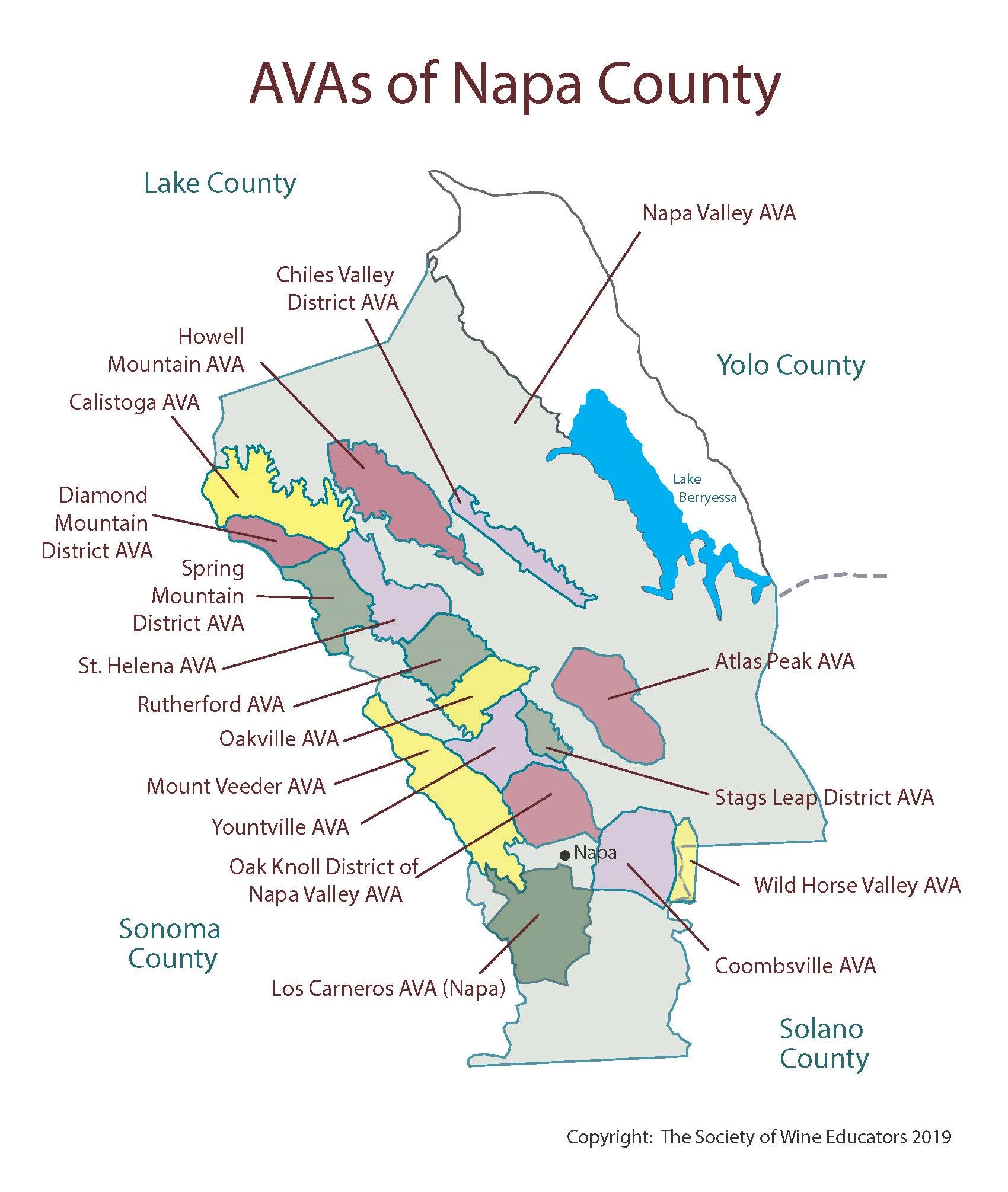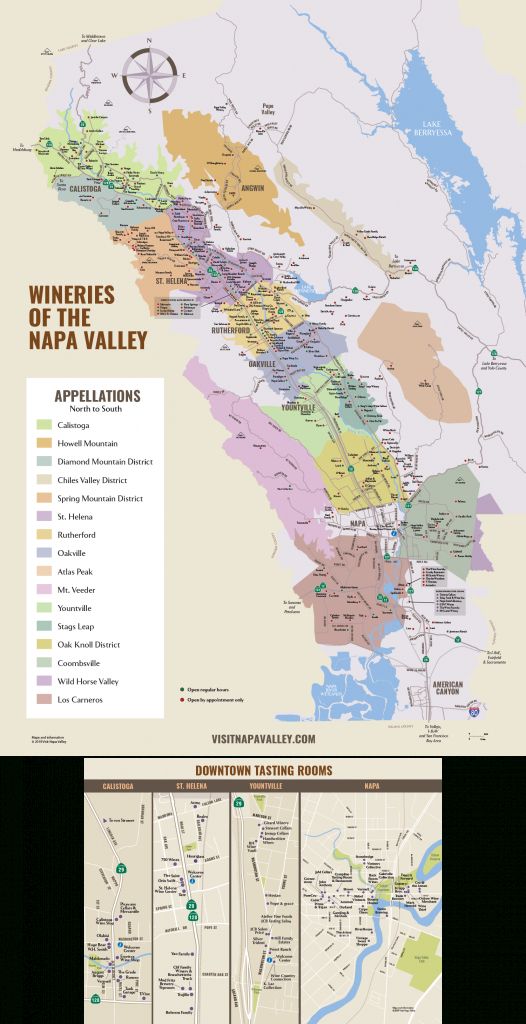
Cabernet Sauvignon has risen confidently to become Napa's star performer and is the most widely planted grape in almost all of the valley's subregions. These days, you can find over 200 different types of grapes there. The grape varieties grown in Napa have changed a lot over the last 150 years. Napa Valley soils contain 50% of the world's soil orders! That's a lot! Volcanic soils, marine bedrock, and sedimentary soils are found in it, which is the result of some dramatic geological activity from 150 million years ago.ĭiscover Wineries in Napa Valley with the open cellar door.
#NAPA VALLEY WINE MAPS FULL#
This is achieved through acid balance and leaving the grapes on the vine for as long as possible to extract their full flavour. This slowing down the ripening process creates wines with a deep, rich flavour. This spot should be the hottest in Napa because it’s the furthest from San Pablo Bay but cool air from the Chalk Hill gap in the Mayacamas Mountain brings a bit of relief to this area and cools down the territory. Northern vineyards in Napa Valley, like Calistoga AVA and Saint Helen AVA, have the warmest daytime temperature and produce full-bodied, concentrated Cabernet Sauvignon. Moving to the north, the climate becomes warmer. However, what plays a crucial role in high-quality grape production is the number of cooling influences vineyards of Napa get. San Pablo Bay plays the biggest role in cooling down Napa Valley, especially the southern vineyards of Stags Leap District AVA, Oakville AVA, and Rutherford AVA.

Napa Valley has Mediterranean Climate, which is favouring grape growing in this area. Despite its small size, you will discover the diversity of soil types, and climates taking influences from different Geographical aspects, which results in many different styles of wines produced in Napa Valley. To the west, Mayacamas Mountains create a natural boundary between Napa and Sonoma, and to the east, the Vaca mountains separate Napa from the northern part of Central Valley. It is only 50 kilometers long from north to south and 5 kilometers wide. Napa Valley occupies a small but unique area. He championed varietal labeling and is considered to be one of the modern wine industries' pioneers. Robert Mondavi, a pioneer in Napa Valley's wine industry, established his winery in 1966. National Register of Historic Places too. Their winery was established way back in 1875, making it one of the oldest operating vineyards, and has been added to the U.S. The Beringer brothers have a long and important history in California. Yount, John Patchett and his winemaker Charles Krug who established their company (Krug Winery). The founders of the wine industry in Napa Valley were George C. Winemaking in Napa Valley has been going on since the 19th Century, but it has only been since the 1960s that wine of any particular quality has been produced. Prestigious vineyards of Napa Valley AVA stretch north to south from Calistoga as the northernmost point to San Pablo Bay which plays the biggest role in moderating Napa’s climate. The Napa Valley wine region is located in Northern California, 50 miles northeast of San Francisco. Napa Valley become California's first American Viticultural Area (AVA) in 1981 because of the uniqueness of its terroir and capability to produce high-quality distinctive wines. The region is well-known for its top-notch Cabernet Sauvignon that comes in different styles across Napa Valley.


Napa Valley is among the most famous and prestigious wine regions around the world and America’s star in wine production.


 0 kommentar(er)
0 kommentar(er)
